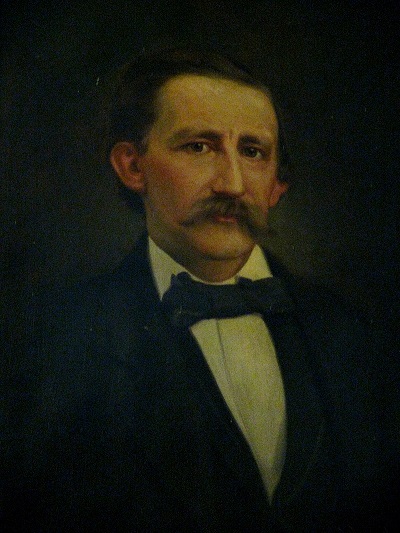William Sprigg Hall was born on July 9, 1832 at South River in Anne Arundel County, Maryland. He came to St. Paul, MN in 1854. That same year he was admitted to practice law and formed a law partnership with Harwood Inglehart. (Minn. Reports 20, xi) In 1856 he was appointed Superintendent of the Common Schools of Minnesota, wherein he served for two years. He married Elizabeth Seliman Welsh in 1857. That same year he was elected to the first Minnesota Senate as a Democrat, and served until 1860.
The Minnesota Court of Common Pleas was established in 1867 to handle the increase in business and resulting judicial backlog of the Ramsey County District Court. Hall was promptly elected to this new position.* (Williams, A History of the City of Saint Paul, and of the County or Ramsey, Minnesota, 428) As Judge, Hall worked with his colleagues and platted 160 new acres on St. Paul’s East Side. Hall Ave. is named for him, with Arundel St., Kent St. and Maryland Ave. all being named for his birthplace. Floral-themed street names (Geranium, Ivy, Rose, etc.) were designated as a play on his middle name, imagined as ‘sprigs’ of flowering plants. (Collections of the Minnesota Historical Society 17, p. 624-5)
In 1869 Judge Hall presided over a criminal trial which featured Minnesota’s first black jurors. (Five of the jurors on the panel were black men.) The facts are murky, but it was theorized that the Judge and the Sheriff orchestrated this mixed jury so as “to send a message” of sorts. (Green, A Peculiar Imbalance: the fall and rise of racial equality in early Minnesota, 174) Judge Hall later heard a case involving a boy who became injured playing on a railroad turntable. The Judge ruled in favor of the railroad, stating that there were no legal grounds on which to hold in favor of the trespassing boy. Upon its appeal, however, the Minnesota Supreme Court issued an opinion reversing Hall’s judgment that helped form the basis of modern tort law’s “attractive nuisance” doctrine. (Keffe v. Milwaukee & St. P. Ry. Co., 21 Minn. 207 (1875); Karsten, Heart versus Head: judge-made law in nineteenth-century America, 211)
Following a period of shaky health, Judge Hall was returning home to St. Paul from a trip to back to Maryland when he died aboard the train. Only forty-two years old, he left behind a widow, two sons, and three daughters. (Minn. Reports 20, x)
*This position was later merged into the Ramsey County District Court Bench.
